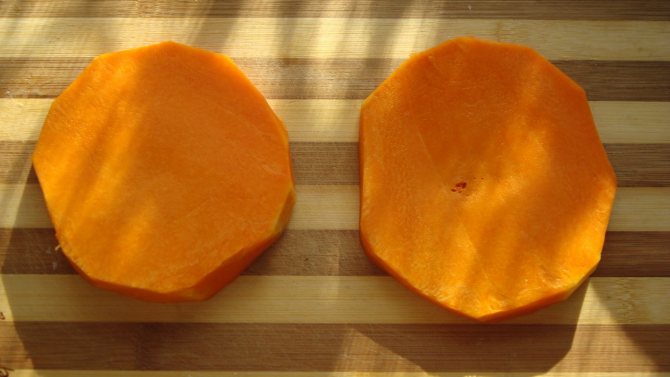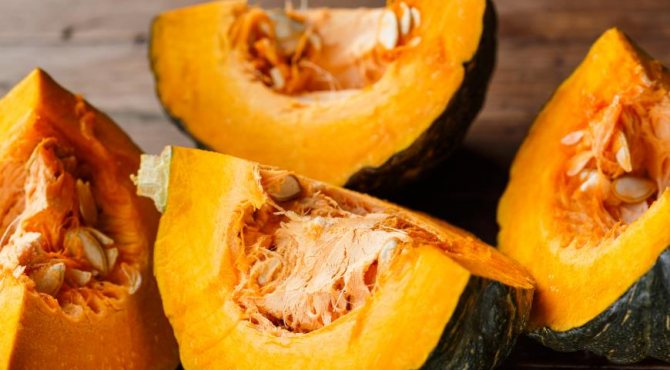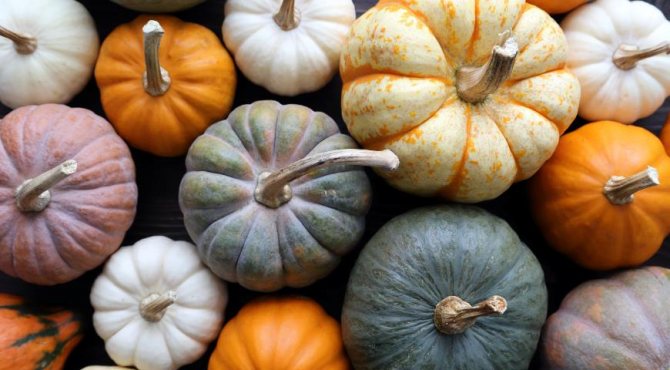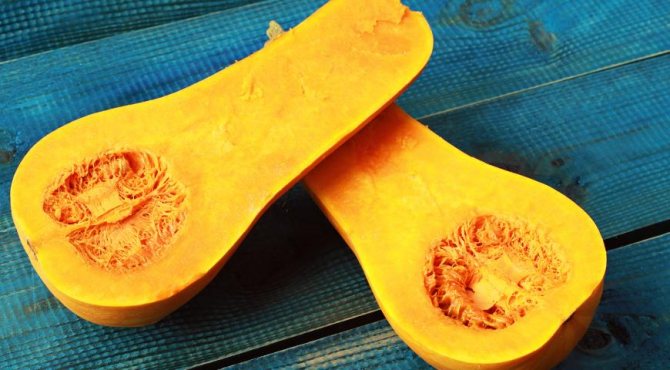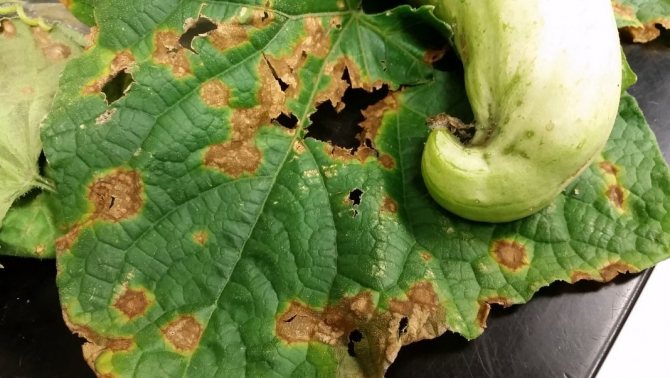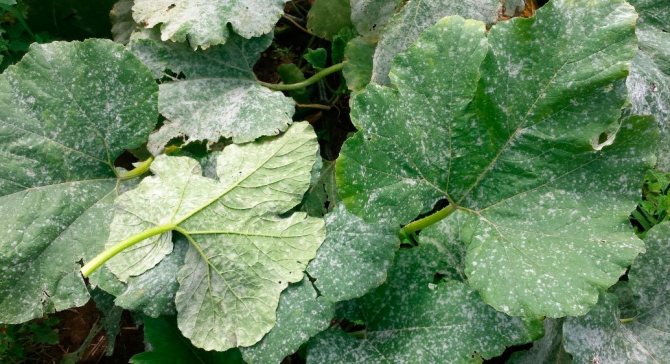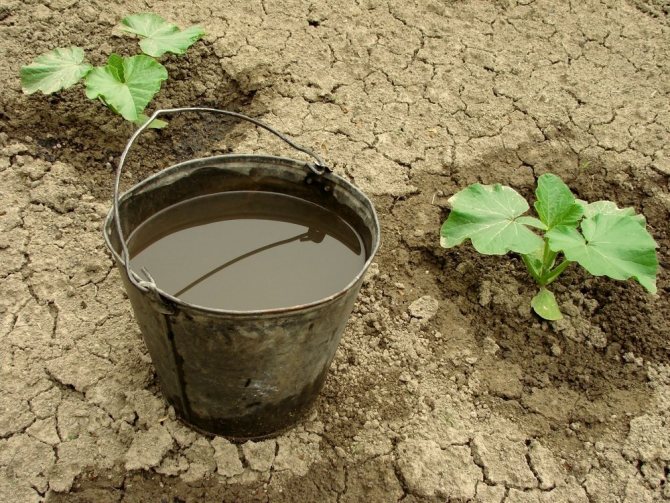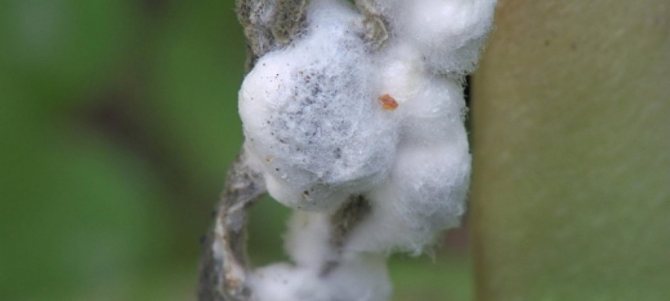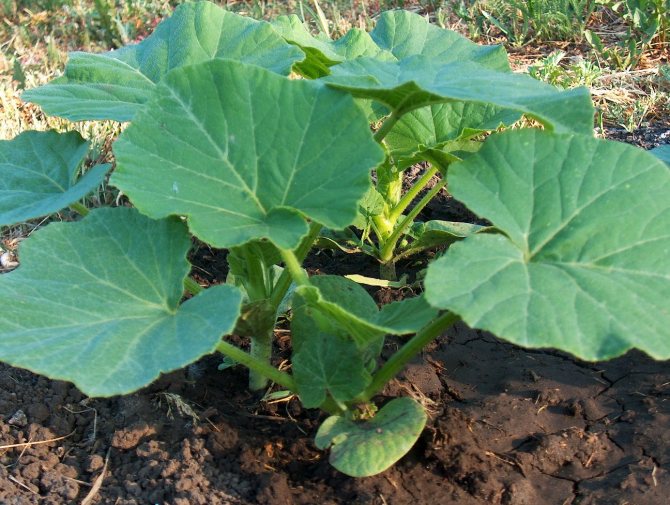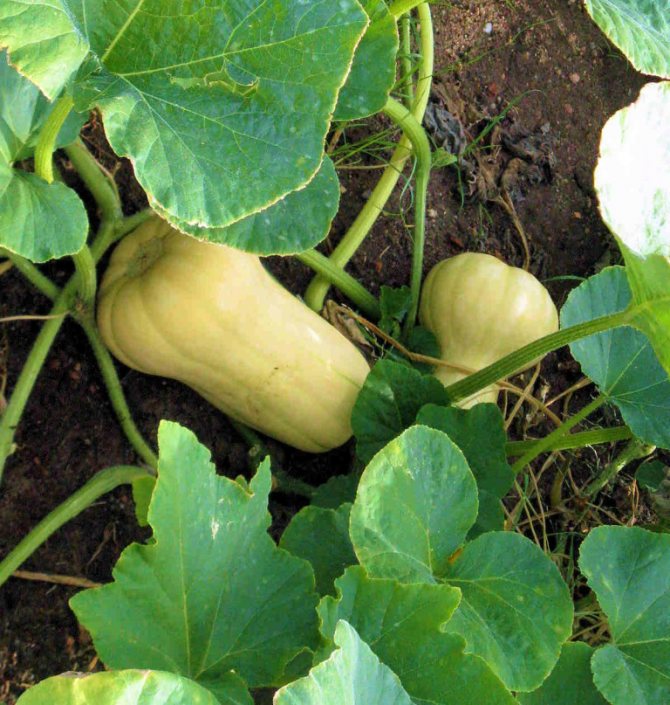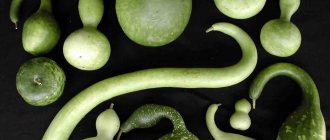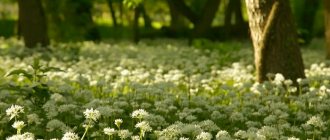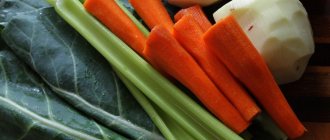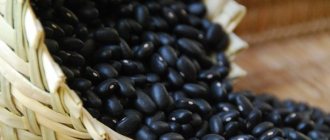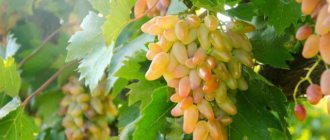»Vegetable» Pumpkin »Peculiarities of Butternut Butternut Gourd
0
221
Article rating
Butternut pumpkin is an artificially grown variety. It was bred in 1960 in America, crossing two varieties: nutmeg and wild African. Before growing, you should familiarize yourself with the detailed characteristics of the variety.

Features of Butternut Butternut Gourd
Butternut pumpkin: general information about the variety
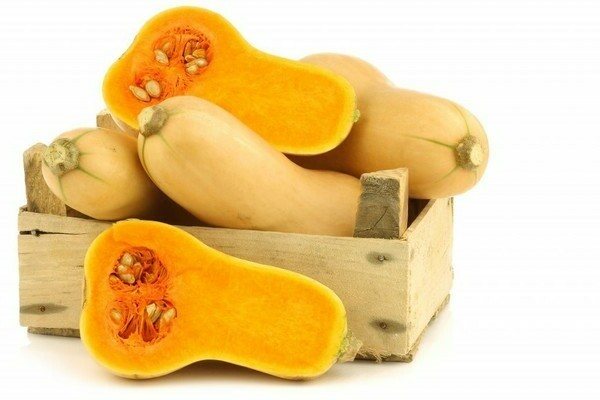

Pumpkin Butternut: photo
- The life cycle of the Butternut variety is one year. The culture develops powerful stem processes up to three meters long. They spread along the surface of the earth using any support structure. Large foliage and sharp thorns cover the outside of the stem.
- Butternut pumpkin forms unisexual inflorescences, shaped like a bell with a convoluted anther. The root system is represented by the main process in the form of a rod. It goes deep into the soil up to two meters, and develops up to four meters in diameter.
- Fruit of the Butternut variety can be compared in shape to a pear or a guitar. The largest vegetables can weigh up to three kilograms. Such fruits tolerate storage well. Inside there is a sweet pulp with hints of nutmeg.
- The characteristic pumpkin smell is absent. This variety is characterized by a homogeneous, tender pulp. Such vegetables are suitable both for fresh consumption and for preparing various dishes. The pumpkin has a characteristic rich orange color.
In the wider part of the vegetable there are seeds, their number is much less than in vegetables of other varieties.
Because of these characteristics of the fruit, pumpkin can be used in various dishes. Vegetables are great for boiling, frying, and baking. They also do not lose their juiciness and can become an excellent side dish for meat and fish dishes. In addition, pumpkin is great for fresh freezing.
Distinctive features of the variety
One of the main differences between Butternut pumpkin and other varieties is the high sugar content of vegetables. The fruits have a dense, buttery structure and have an amazing aroma with nutty notes.
Butternut pumpkin needs a lot of moisture and heat. Also, a distinctive feature of the variety can be safely called the shape of the vegetables and the quick ripening period.
And carotene, which is part of vegetables, allows pumpkin to be introduced into the diet of young children.
It is recommended to harvest the Butternut plant at the time of ripening. If you miss this moment, ripe fruits will take in all the nutrients intended for new vegetables. And unripe pumpkins after harvesting do not have the ability to ripen.
Diseases and pests
Like any other plant, pumpkin can be affected by various pests and diseases. Among the latter, two forms are distinguished:
- bacterial - they affect the leaves and the fruit itself, deforming it, changing the taste and composition, due to which the benefits of the product are reduced;
- fungal - they form a white bloom, due to which the plant rots and dies.
The description says: to avoid such situations, the Butternut pumpkin needs to be watered in time, it is necessary to remove weeds and loosen the ground. Before planting, it is imperative to fertilize the soil with natural fertilizing.
The most dangerous pests for a vegetable are spider mites and aphids.The remedy for them is only timely watering, as well as getting rid of the culture of diseased leaves that can infect the pumpkin. But in no case should you treat the plant with chemicals.
Pumpkin Butternut: variety description
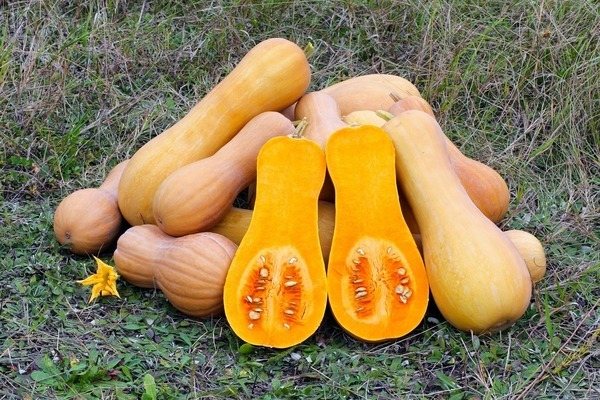

pumpkin butternut
The culture develops well in warm climates. However, with some care, vegetables can grow in the northern regions of the country. In the second case, it will be possible to grow several ripe fruits. Unripe vegetables are well suited for preservation.
As practice shows, up to fifteen vegetables can be grown during the summer season. This figure mainly depends on the weather conditions in your area.
Depending on how you shape the Butternut pumpkin and its lashes, you can get a few large fruits and many small ones. This feature of the culture allows you to predict in advance the yield and size of future vegetables.
Butternut pumpkins need a lot of moisture. If the culture lacks water, then the growth of the plant slows down. And this has a detrimental effect on the future harvest.
The culture needs timely fertilizing.
Since the Butternut pumpkin variety grows well only under warm temperatures, the method of growing with the help of seedlings is suitable for it. It is worth remembering that temperatures below ten degrees will have a detrimental effect on the culture.
The design of the "warm bed" will help create favorable conditions. Thanks to this, it is possible to normalize the temperature regime in a rainy and cool summer.
Resistant to harmful insects and diseases


If you do not follow the recommendations and rules for growing Butternut pumpkin varieties, the plant can be affected by harmful insects and diseases.
- Diseases caused by bacteria. They are characterized by changes in the foliage of the plant. The shape of vegetables and, in general, all characteristics of the fruit change.
- Diseases caused by fungi. During them, mold and plaque appear on the surface of the plants.
Often the culture is affected by bacteriosis. It appears as brown spots on the foliage of the plant. Over time, the lesion dries out and a hole forms. In addition, the bacteria that provoke the disease remains in the seeds of the plant for a long time.
The cause of the appearance of the pathogen is excess moisture and sharp fluctuations in temperature. To overcome the disease, it is necessary to carry out a sanitary pruning of the plant and spray the culture with a special solution.
Another disease that summer residents may encounter in the process of growing pumpkins may be white rot. It is characterized by the appearance of a white bloom on the foliage of the plant. Vegetables turn white, then darken.
The disease is actively exacerbated by excess moisture and cold weather. To fight the fungus, you need to use charcoal and fluff. Areas of the plant through which the disease has spread are covered with mucus and mycelium.
If the defeat reaches the base of the Butternut crop, it will die. For the prevention of the disease, timely loosening of the soil can be carried out. Also apply fertilizing and carry out sanitary pruning of foliage.
But not always white plaque signals a disease with white rot. Smaller spots are typical for powdery mildew. The disease affects the plant from the inside, knocking down the process of photosynthesis. For this reason, the foliage becomes yellowish and dries up.
In order to get rid of the disease, a seventy percent sulfur solution is used.
In addition, Butternut pumpkins are susceptible to attacks by harmful insects. For example, spider mites, melon aphids and wireworms.
In order to prevent damage to the fruit by harmful insects, it is necessary to destroy the entire damaged crop, and apply a specialized agent.
Pros and cons
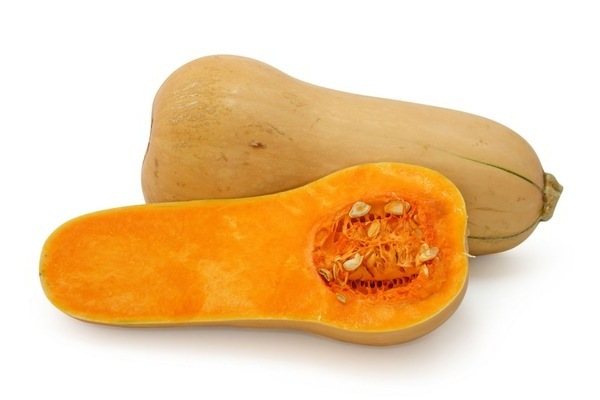

Thanks to the crossing of two varieties of pumpkin, Butternut combined best properties:
- Early ripening of fruits.
- Suitable for long-term fresh storage. Even after a while, pumpkins have their own distinctive taste and aroma.
- Due to their low calorie content, Butternut pumpkins are suitable for a dietary diet.
- Spicy aroma of Butternut pumpkins with characteristic nutty notes.
- Amazing taste.
- Suitable for fresh consumption.
- Convenient vegetable size.
- A small amount of seeds in one part of the vegetable.
- Thin skin of the fruit.
- Exquisite pumpkin appearance.
- Suitable for growing on supporting structures.
It should be noted a number cons inherent in this variety:
- Butternut pumpkins are quite picky about the level of fertility of the soil in which they grow.
- The culture needs regular watering, a tie on a supporting structure and abundant fertilization.
- The plant is seriously affected by the temperature regime of the region.
Care
After planting seedlings in the ground and abundant first watering, the amount of water should be reduced. This will speed up the development of the Butternut pumpkin. After the appearance of the fruit, it is recommended to water it 2 times a week.
With good soil, the plant does not require frequent feeding. During the entire growing season, fertilizer is applied three times.
- At the very beginning of planting, humus is introduced into the hole and mixed with the soil.
- After the formation of the ovary, a solution of mullein (1: 3) or bird droppings (1:10) is added. Mineral fertilizers are used, which contain potassium and nitrogen.
- When the fruit is about the size of a fist, any organic fertilizer is applied.
On poor soils, the amount of dressing can be increased up to 7 times.
Competent pruning of Butternut pumpkin will allow you to get a rich harvest, therefore, pinch the central trunk, leaving two or three side lashes on which female flowers develop. As they grow, they are spread on the ground and sprinkled with soil in several places to develop a strong root system.
Pumpkin variety Butternut: the benefits of a vegetable
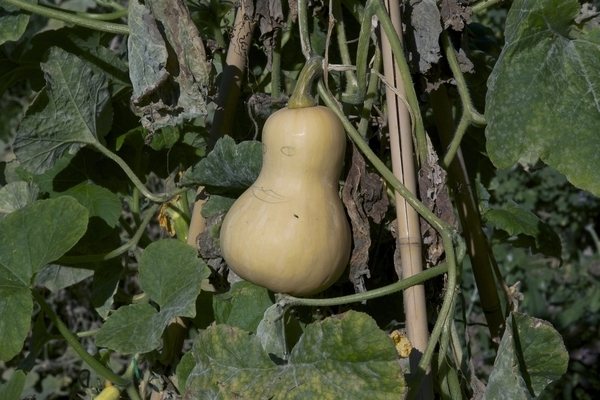

Pumpkin varieties Butternut: photo
Experts recommend adding Butternut pumpkin to the diet.
Besides its amazing taste, pumpkin is a rich source of vitamins and minerals. It contains vitamins of group A, K, as well as ascorbic acid. Vegetables are rich in magnesium, calcium and zinc.
And also the fruits contain folic acid necessary for pregnant women.
It is difficult to exaggerate the useful properties of this culture for humans.
- The product is useful for pregnant women and children.
- Eating Butternut pumpkin can help fight pain cramps, irritability, stress.
- Normalizes the work of the intestinal department.
- Helps to remove harmful substances from the body.
- Regular consumption of this product is the prevention of heart and vascular diseases.
- Minimizes the likelihood of stroke.
- Helps to normalize blood pressure.
- Eating pumpkin is a preventive measure in the formation of cholesterol plaques.
- The antioxidants contained in the product help protect the body from cancer.
- Vitamin-rich vegetables normalize the immune system and help fight viral attacks.
- Culture is good for people suffering from eye diseases.
- Due to the calcium content in the product, pumpkin is useful for people suffering from diseases of the bone skeleton.
It is very useful for women to eat Butternut pumpkins. The product contains vitamins of group A and vitamin E, thanks to which the skin retains its youthfulness and elasticity.Also, these vegetables help in the fight against unwanted pigmentation. In addition, pumpkin is good for your hair.
Thanks to these properties, many housewives use Butternut pumpkin in the manufacture of home remedies for skin and hair care.
Pumpkin Butternut: cultivation of a variety
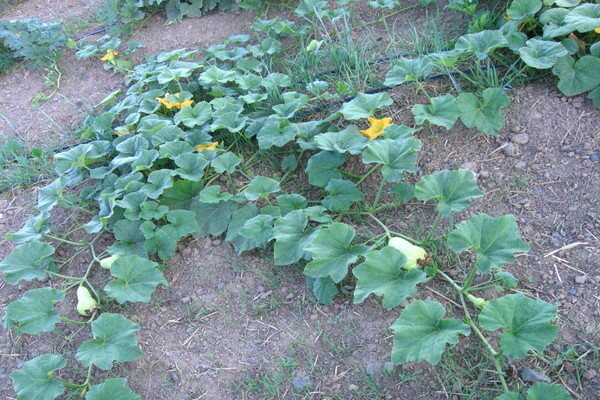

In our country, the Butternat variety is best grown using seedlings. However, in regions with a warm climate, you can plant a crop in an open area.
- Before planting, it is necessary to carry out a number of preparatory work with the seeds. The first step is to warm them up at a warm temperature for about thirty days. Then you need to select empty seeds.
- To do this, all the material is sent to a solution of water and salt. Those seeds that have risen to the surface for sowing are not suitable, they must be removed. Use only the material that remains at the bottom of the container.
- After that, the selected material must be disinfected. For this, a non-concentrated solution of potassium permanganate is used. In it, Butternut pumpkin seeds are soaked for twelve hours.
- In order to increase the sustainable qualities of the plant, the seed material must be hardened. For this, a container with seeds is placed in a refrigerator.
- In regions with warm climates, Butternut pumpkin seeds are planted in an open area in early summer. Two copies in one groove.
- Growing seedlings will require individual containers and a special soil mixture, which includes organic matter, peat and sawdust. Having prepared a container with soil, we plant Butternut pumpkin seeds. The containers must be placed in a warm place.
- It is possible to transplant seedlings to an open area with the onset of stable warm weather. By this time, several leaves should have formed on the shoots.
- Before planting, the soil in the selected area must be dug up, organic and mineral fertilizers applied. The location for the Butternut pumpkin should be sunny and warm. The planting scheme of the culture is one and a half meters.
- Legumes or cabbage will be the best options for the prior crop. It is not recommended to choose a place where potatoes or tomatoes, as well as melons or watermelons, were grown.
- After planting, the main care of the plant will be activities such as loosening the soil, removing weed grass, regular watering and fertilizing.
- Butternut pumpkins need to be watered frequently during active crop growth. At the moment when ovaries appear on the plants, the frequency of watering can be reduced.
Landing features
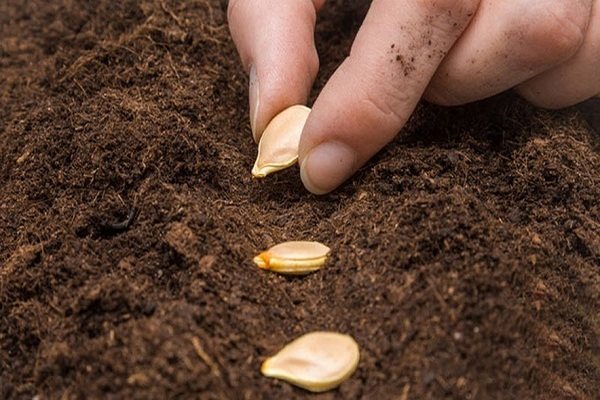

Butternut pumpkin is grown from seeds in a seedling method, sowing seeds from about mid-April, so that by the 10th of May, the seedlings can be planted in a permanent place. For most regions, this method is safer and more acceptable, since the plants are already strong and not so vulnerable. For the southern regions, you can plant seeds directly in open ground from late April to early May. They sprout well and grow quickly in the future. Each gardener chooses the planting method himself, taking into account the climatic characteristics of the region.
Pumpkin seeds are processed on the day of planting. Harmful bacteria may have accumulated on the peel during collection and storage. To prevent their development, the seeds must be disinfected. The easiest way to kill bacteria is to soak the seeds in hot water for 20-40 minutes. A couple of potassium permanganate crystals can be added to the water for greater efficiency. Some gardeners treat the seeds with hydrogen peroxide and then rinse them with water. For fast germination, seeds are germinated in advance. For this purpose, cheesecloth or a rag is moistened in warm water and the seeds are spread on it, then covered with another layer of damp cloth and left for 1-2 days.The protective shell should crack on the seeds, now the seeds are ready for planting.
For future seedlings, it is necessary to create a favorable soil. Mix humus with sand and peat in equal proportions and add ordinary earth. The soil is spilled with Fitosporin solution to protect against infections. You can bake the earth in the oven at a temperature of 100 degrees. Then soil is poured into the box, it is well moistened and loosened. The soil should be free of debris and large lumps. The seeds are inserted into the soil to a depth of 7-8 mm, then they are added a little, but they do not tamp the soil. The box is placed in a warm place with good lighting. Cover with a film or a transparent lid on top. The temperature for the formed seedlings should not fall below 23-25 degrees. After 7-10 days, the first sprouts of seeds hatch, which must be dived into larger cups.
Attention! You can grow seedlings without going through the picking stage.
Pumpkin Butternut: cooking recipes
The fruits of this variety are widely used in cooking. They are great for fresh consumption. Vegetables also complement salads.
They can be fried or baked in the oven. Pumpkins are suitable for grilling or grilling. This vegetable will be an excellent side dish for meat or fish. As we said, this product is widely used in cooking. Let's talk about some of the most popular recipes.
Snack recipe


How to make Butternut squash for a snack:
- First, you need to cleanse the contents of the fruit by removing all the seeds. After that, grate the vegetable on a coarse grater.
- Cut the white cabbage in any shape.
- Fifteen leaves of the correct shape must be separated from the head of red cabbage. They are laid out on a plate and sprinkled with lemon juice and olive oil.
- Grated pumpkin and cabbage are distributed over a plate with leaves.
- Add salt and pepper to taste.
Butternut Pumpkin Cream Soup Recipe
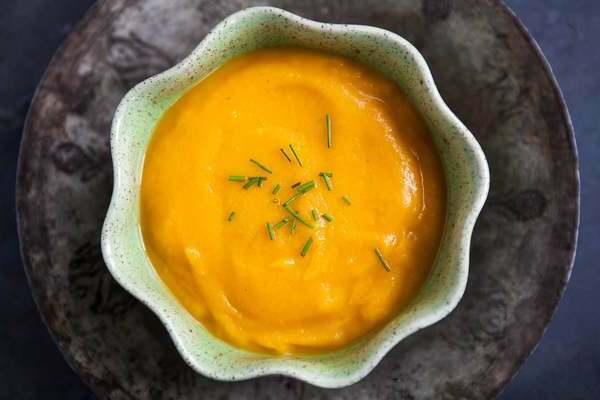

How to make Butternut Pumpkin Soup:
- The vegetable must be divided into two equal parts.
- Get rid of the inner contents of the pumpkin.
- Lubricate the vegetable with oil and add salt and pepper to taste.
- Bake the Butternut squash in the oven for thirty minutes on each side.
- Wrap the head of garlic in foil and bake in the oven.
- Extract the pulp from the cooked pumpkin.
- Peel the garlic cloves.
- In a frying pan, fry the onion, zucchini and pumpkin pulp.
- Simmer all ingredients in broth.
- Using a blender, achieve a homogeneous mass of all ingredients.
- Add cheese and warm cream to the soup.
- The resulting cream soup must be brought to a boil.
- Serve the cream soup in deep bowls, garnish with a sprig of herbs.
Baked Pumpkin Butternut with Honey
This is a recipe for baking pumpkin in the oven with honey.
- Peel vegetables and remove inner contents.
- Chop the pumpkin into cubes.
- Cook the product until not fully cooked.
- Bake the pumpkin in a container for the oven.
- Mix orange juice, honey and mustard.
- Pour the sauce over the pumpkin and leave in the oven for five minutes.
Sauce recipe
- In a blender, combine olive oil, lime juice, mint and salt, pepper to taste.
- Whisk the ingredients thoroughly.
- Add pumpkin to the mixture.
- Can be served with fish.
Butternut Pumpkin Spaghetti Recipe
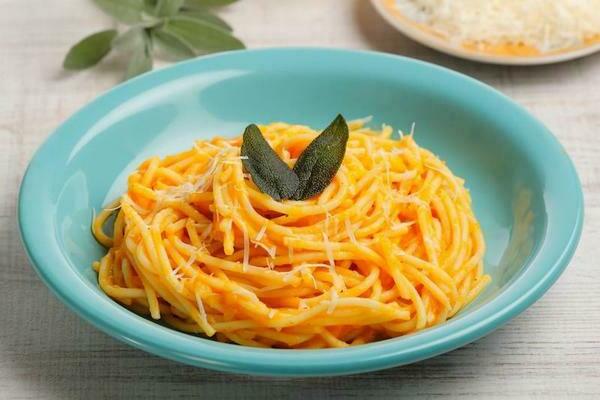

- You need to peel a few cloves of garlic, chop and fry.
- Fry the onions in the same pan.
- Fry the pumpkin in the same place.
- Cook the spaghetti separately.
- Mix all ingredients.
- Simmer until tender.
- Serve with cheese.
Garden bed preparation
The best option for placing a garden bed would be loamy soil on a hill or in a place where irrigation water does not accumulate. The land on which legumes, potatoes, onions, cabbage, various green manures (oats, buckwheat, etc.) were planted last year is excellent. It is not recommended to grow Butternut pumpkin after related melons and pumpkin crops (zucchini, cucumbers, etc.).
A month before planting seedlings, the holes are fertilized with rotted manure (half a bucket), ash (2 glasses) and covered with transparent polyethylene. To prevent burns from top dressing, the place is dug up, mixing with the lower layer of soil.
Pumpkin Butternut: reviews of summer residents
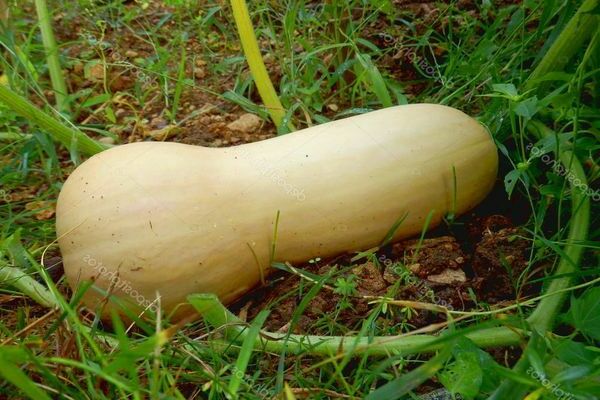

Natalia, Bryansk
Our whole family is very fond of Butternut pumpkins. The vegetables are delicious and suitable for making soups and cereals. It is especially pleasant that children like dishes with this product.
Julia, Dmitrov
We grow this crop on our site. If you follow all the recommendations for caring for the plant, you can harvest a good harvest. This is the tastiest and most aromatic variety.
Advantages and disadvantages
The variety has almost no minuses, the vegetable simply requires timely watering and high-quality care.
Butternut pumpkin has a lot of positive qualities. She is versatile and early maturity. The fruits ripen in just three months. The culture gives a high yield, 20 pumpkins can be harvested from one bush.
Vegetables have a convenient shape, compact size and light weight. A significant advantage for cooking is that the seeds are located in groups at the bottom of the crop.
The advantage of the vegetable is also that it is stored for a long time and can ripen even outside the bush. This pumpkin is also useful, it contains many vitamins, it has a pleasant and unusual taste and a bright aroma.

